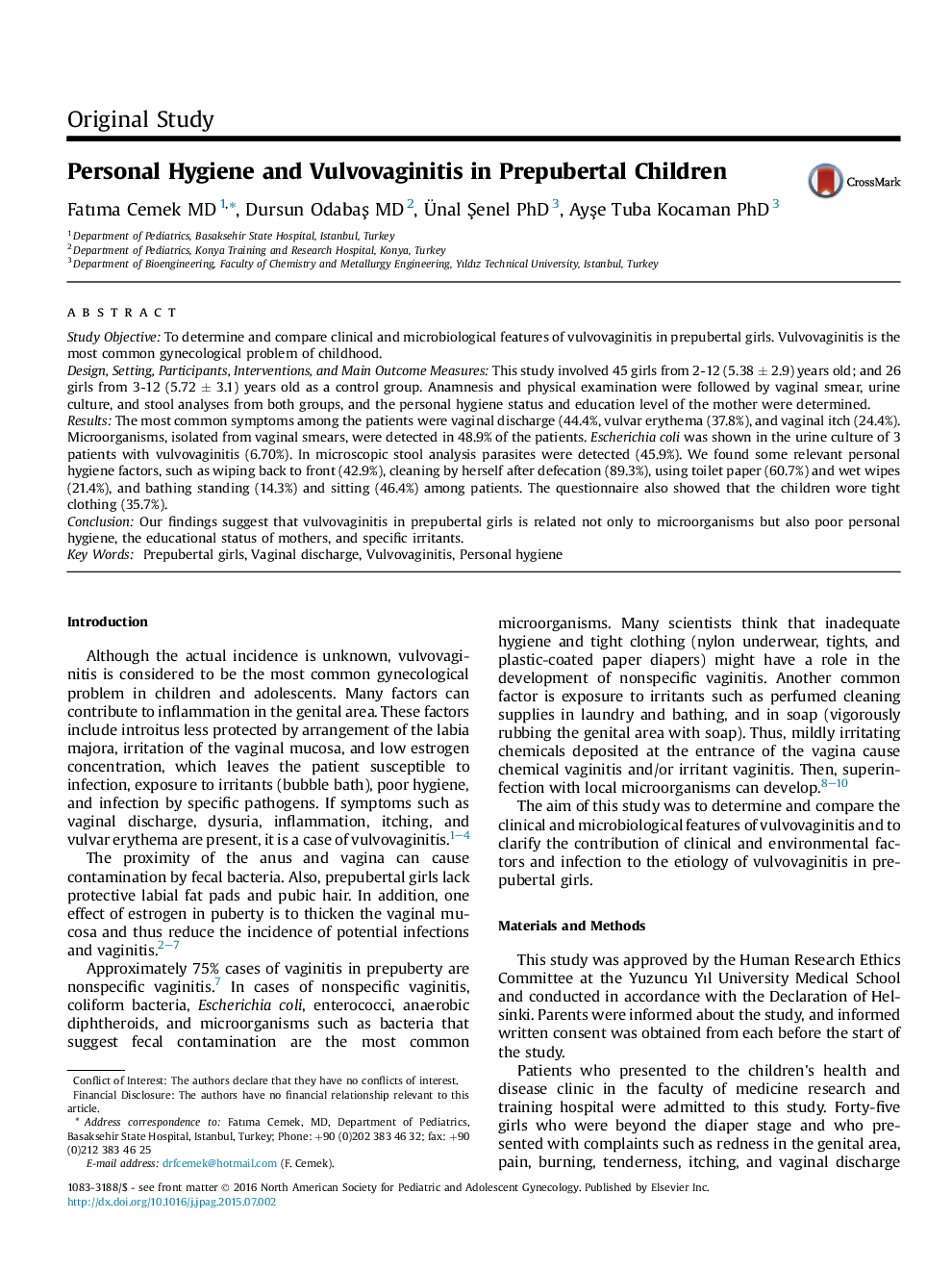| Article ID | Journal | Published Year | Pages | File Type |
|---|---|---|---|---|
| 3961172 | Journal of Pediatric and Adolescent Gynecology | 2016 | 5 Pages |
Study ObjectiveTo determine and compare clinical and microbiological features of vulvovaginitis in prepubertal girls. Vulvovaginitis is the most common gynecological problem of childhood.Design, Setting, Participants, Interventions, and Main Outcome MeasuresThis study involved 45 girls from 2-12 (5.38 ± 2.9) years old; and 26 girls from 3-12 (5.72 ± 3.1) years old as a control group. Anamnesis and physical examination were followed by vaginal smear, urine culture, and stool analyses from both groups, and the personal hygiene status and education level of the mother were determined.ResultsThe most common symptoms among the patients were vaginal discharge (44.4%, vulvar erythema (37.8%), and vaginal itch (24.4%). Microorganisms, isolated from vaginal smears, were detected in 48.9% of the patients. Escherichia coli was shown in the urine culture of 3 patients with vulvovaginitis (6.70%). In microscopic stool analysis parasites were detected (45.9%). We found some relevant personal hygiene factors, such as wiping back to front (42.9%), cleaning by herself after defecation (89.3%), using toilet paper (60.7%) and wet wipes (21.4%), and bathing standing (14.3%) and sitting (46.4%) among patients. The questionnaire also showed that the children wore tight clothing (35.7%).ConclusionOur findings suggest that vulvovaginitis in prepubertal girls is related not only to microorganisms but also poor personal hygiene, the educational status of mothers, and specific irritants.
